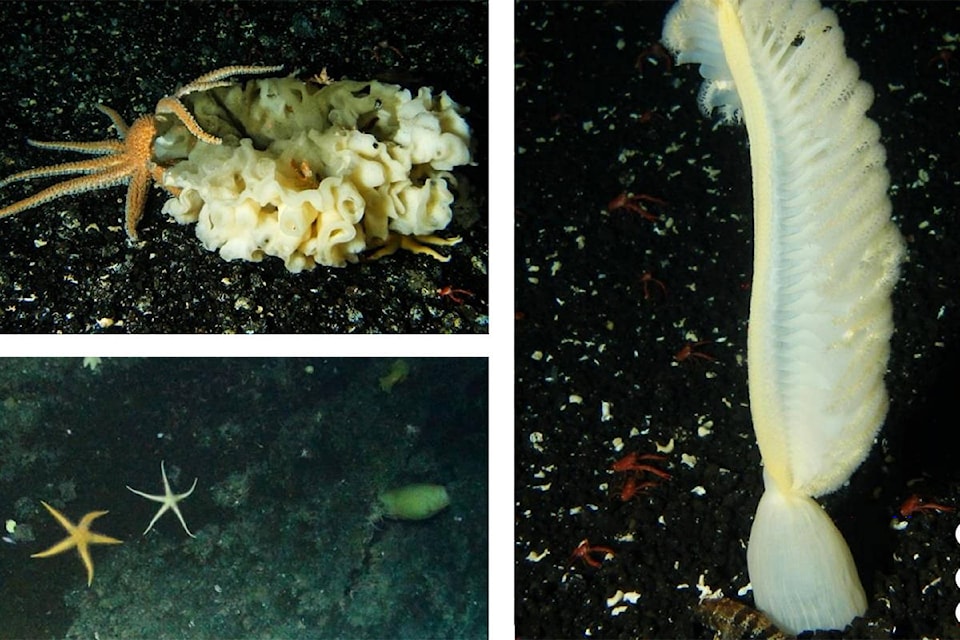Islanders will be able to livestream underwater video from the SG̱aan-Ḵinghlas/Bowie seamount next month when a research expedition explores the ecosystem on the submarine volcano.
From July 5 to 21, a joint science expedition will explore the Bowie, Dellwood, and Explorer seamounts from the Nautilus, a 64-metre research vessel.
Bowie Seamount is a 3,000-metre submarine volcano about 180 km west of Haida Gwaii. It is closer to the ocean surface than any other seamount in Canada.
The Dellwood seamounts are a smaller range south of Cape St. James and west of northern Vancouver Island. Explorer is an 830-metre seamount that is still further south along a volcanic ridge between the Pacific and Explorer plates.
Announced on June 8, World Oceans Day, the expedition is a partnership between Oceana Canada, an ocean conservation group, as well as the Haida Nation, Fisheries and Oceans Canada, and Ocean Networks Canada.
“The ocean is vast and doesn’t give up its secrets easily,” said Dr. Robert Rangely, Oceana’s director of science, according to a press release.
Dr. Rangley added that collaboration is key to better understanding and protecting marine ecosystems.
“The Haida Nation’s territory extends from the mountains, forests and rivers of Haida Gwaii to the depths of the ocean, including seamounts such as SGaan-Kinghlas , Supernatural Being Looking Outwards,” said Haida Nation President Kil tlaats ‘gaa, Peter Lantin, according to the same release.
Earlier this year, scientists published new research that found summer is the most critical time to avoid shipping noise impacts on the whales and fish that feed around Bowie. A protected area of 6,131 km2 around the seamount actually includes a range of three peaks.
Another research paper recently published by Fisheries and Oceans Canada lists 49 marine animals in the chordata category that were spotted during surveys around Bowie — from deep-sea sunflower stars to boot sponges and squat lobsters. A similar paper listed 66 kinds of algae, bryozoa, and other organisms seen during the same surveys in 2000, 2011, and 2015.
Other research has found that oil spills, seismic surveys, fishing, and aquatic invasive species pose the greatest risks to the Bowie Seamount ecosystem.
While seamounts were not widely studied since the 1980s, they are now considered offshore biodiversity hotspots, with ideal conditions for coral and sponge habitats.
To watch daily livestream video of the seafloor and get updates from the team, visit ProtectOceans.ca.
